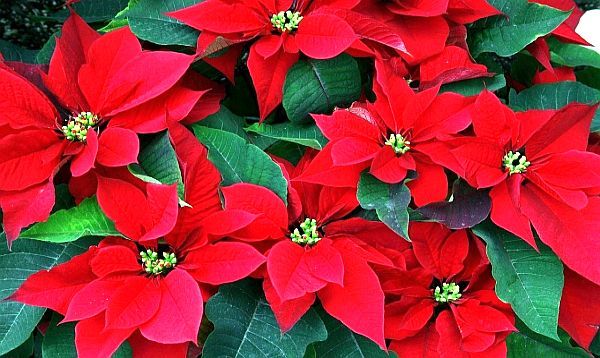Ever wonder where the beautiful plant we call the "Christmas Plant" got its start? With the Christmas season upon us, some people may find it interesting to know the origin of this very intriguing plant.
The poinsettia got its name, not from a horticulturist or plant person, but one of Americas notorious and outstanding Congressmen and physicians, Joel Roberts Poinsett. Mr. Poinsett was appointed as the Ambassador to Mexico by United States President John Quincy Adams in the early 1820s. Joel Poinsett had an interest in botany, and as a result, he would introduce plants into Mexico during his travels there as ambassador. During his visits to Mexico he would wander the country looking for new plant species.
On one occasion he was walking along the side of a road and came upon a rather interesting shrub that had large beautiful red flowers. He took cuttings from the plant and took them back to his greenhouse in South Carolina.
Even though Joel Roberts Poinsett was very dutiful in his appointment as Ambassador to Mexico and Congressman, he will always be remembered for introducing the Poinsettia to the United States.
Did you know that the Poinsettia was a very popular and important plant to the Aztecs in the 14th to 16th century? Back then it wasn't known as the Poinsettia, but was called Cuetlaxochitl (from cuitlatl for residue, and xochitl for flower,) meaning "flower that grows in residues or soil."
The Aztecs used the plant for medicinal and design purposes. The sap would be used to help with fevers, and the red pigment color in the bract (colored leaves) would be used for a dye in clothing and war paints. Famous Aztec King Montezuma would have the Poinsettias brought into what is now Mexico City by caravans because the Cuetlaxochitl (Poinsettia) couldn't be grown in high altitudes due to its lack of hardiness in cold weather.
 |
In the 17th century, Juan Balme, a renowned botanist, noted the Poinsettia in many of his writings. The botanical name, Euphorbia pulcherrima, was assigned to the Poinsettia by German botanist, Carl Ludwig Willdenow. The plant grew through a crack in his greenhouse. Dazzled by its color, Willdenow gave it the botanical name, Euphorbia pulcherrima meaning "very beautiful."
According to the University of Illinois Botany Department, as the Poinsettia became more popular, renowned world botanist William Prescott had just published a book called the "Conquest of Mexico" in which he detailed John Poinsett's discovery of the plant. Prescott named the plant the poinsettia in honor of John Poinsett's discovery.
In the early 1900s, in San Diego, a family with a long history of horticulture introduced the Poinsettia as a landscape plant and used it as a cut flower as well. Not long after their introduction of the Poinsettia into the landscape, its popularity as an indoor plant took off. Because of its unique beauty and red and green colors, it was soon adopted as "The Christmas Plant."
The Ecke family became the largest grower of Poinsettias in the United States, and eventually it was introduced into Europe and other countries.
More Interesting Facts About The Christmas Plant
Many plants in the Euphorbiaceae family ooze a milky sap. Some people with latex allergies have had a skin reaction (most likely to the sap) after touching the leaves. For pets, the poinsettia sap may cause mild irritation or nausea. Probably best to keep pets away from the plant, especially puppies and kittens.
Poinsettias are not poisonous. A study at Ohio State University showed that a 50-pound child would have to eat more than 500 leaves to have any harmful effect. Plus Poinsettia leaves have an awful taste. You might want to keep your pets from snacking on the leaves though since they can cause vomiting and diarrhea.
Today the plant is known in Mexico and Guatemala as La Flor de la Nochebuena (Flower of the Holy Night, or Christmas Eve). Is it any wonder that this once-ancient medicinal plant has become a staple during the Christmas season all over the world?
Poinsettia Day is celebrated on December 12th, the day that Joel Roberts Poinsett passed away in 1851.
When you do go buy a Poinsettia, if you want it to last longer, find one where the "Cyathia" (sigh-aah-the-ah) is still closed. As these little flowers age, the leaves on your Poinsettia begin to fall off, giving your plant the appearance of "plant death."
If you are one who treasures these plants, hang on to it, don't throw it out to die from winter exposure. It will regrow leaves over time and begin to replenish itself and grow up to be a nice looking plant. Make sure you give it plenty of light during the day, keep it away from the window at night and give it one and a half cups of water twice a week.
Original article


